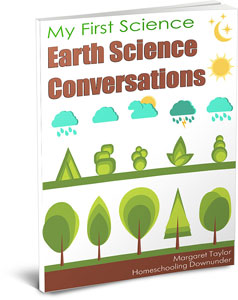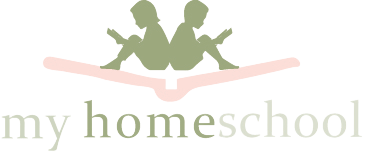Please Note: When you purchase the course this resource comes as a PDF ebook with additional online links to watch videos that complement the lesson.

Introduction
The Australian Curriculum follows the international trends in teaching science and the primary science content is similar to other countries such as New Zealand, United Kingdom, Canada and USA. Topics discussed in this resource are suitable for Australian and international students.
We have used the Australian Curriculum Year 2 Science curriculum (and NESA Syllabus) to structure the content of this resource. Some Australian examples and indigenous content have been included but we also offer alternative resources when we do this. We also include Southern hemisphere and Northern hemisphere resources when appropriate.
See our Year 2 Scope and Sequence for more details.
Charlotte Mason & Conversational Learning
Much of the work involves discussion, drawing out your child's own observations and then recording them in either drawings or cutting and pasting pictures representative of the focus of the lesson. You may need to write words and ideas for your child.
Here are some Charlotte Mason quotes on oral lessons.
“He must be accustomed to ask why — Why does the wind blow? Why does the river flow? Why is a leaf-bud sticky? And do not hurry to answer his questions for him; let him think his difficulties out so far as his small experience will carry him.” Charlotte Mason Series Volume 1, p. 264.
“One of the secrets of the educator is to present nothing as stale knowledge, but to put himself in the position of the child, and wonder and admire with him.” Charlotte Mason Series Volume 1, p. 54.
“Above all, when you come to the rescue, let it not be in the ‘cut and dried’ formula of some miserable little text-book; let him have all the insight available, and you will find that on many scientific questions the child may be brought at once to the level of modern thought” Charlotte Mason Series Volume 1, p. 264.
“Do not embarrass him with too much scientific nomenclature. If he discover for himself (helped, perhaps, by a leading question or two), by comparing an oyster and his cat, that some animals have backbones and some have not, it is less important that he should learn the terms vertebrate and invertebrate than that he should class the animals he meets with according to this difference” Charlotte Mason Series Volume 1, p. 265.
Lesson Preparation
A small amount of preparation is required in looking over the lesson, having appropriate pictures, paper, colouring pencils.
Most of our lessons have online Earth Science Links which will give you some additional information on the topic you are teaching. On average this will take 10 minutes. It usually includes a short relevant picture book read aloud and, in some cases, an explanation video. The online component is not compulsory, but it will enhance your lesson and help stimulate conversations on the topic.
There are eight lessons included in What is Weather? A simple weather chart is provided to record rainfall and clouds (also found in the Earth Science Links).
Outdoor Observance has eight lessons. A moon chart is provided to record the phases of the moon (also found in the Earth Science Links).
In Earth’s Assets there are eight lessons. You can spread them over 2 weeks don’t feel bound to fulfilling every lesson each week. This is a guide, work to your child's ability and interest and your own circumstances. Some equipment will be needed with this study.
Lesson 1 - What is Weather ?
Commence Weather Chart which can be found in your virtual cupboard under Earth Science Links.
Please start your lesson with the Earth Science Links resources. Then use the questions below to have a conversation lesson.
· Discuss with your child the concept of weather.
· What is weather?
· Why do we want to know about the weather?
· Make a list of words they know are associated with weather.
· Draw pictures or cut and paste pictures that are associated with these words.
Earth Science Links
All through the Year by Jane Goodwin
- A year in Australia.
Read by the author.
My Little Book Golden Book About Weather By Dennis R. Shealy
- General seasons and weather
